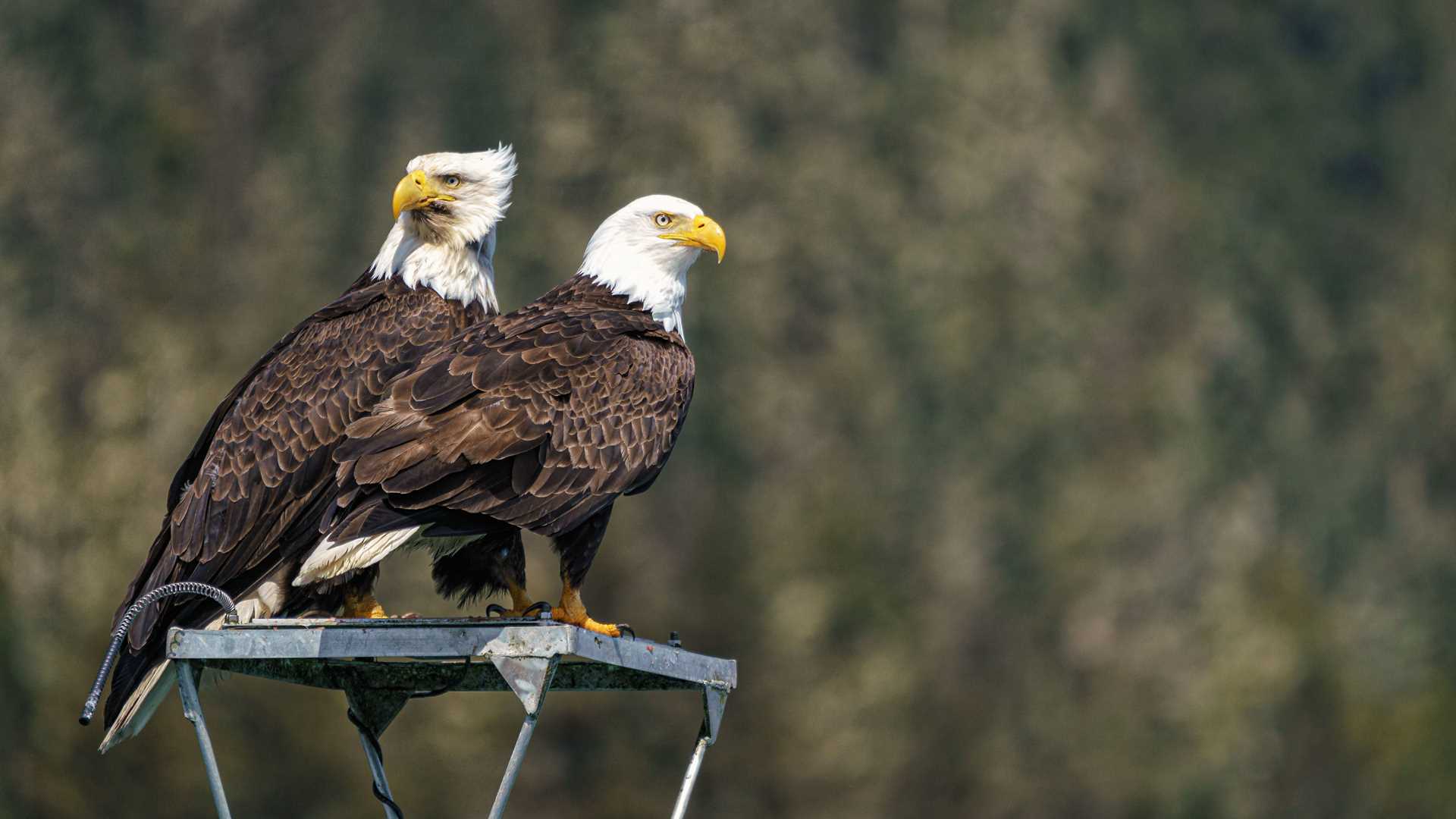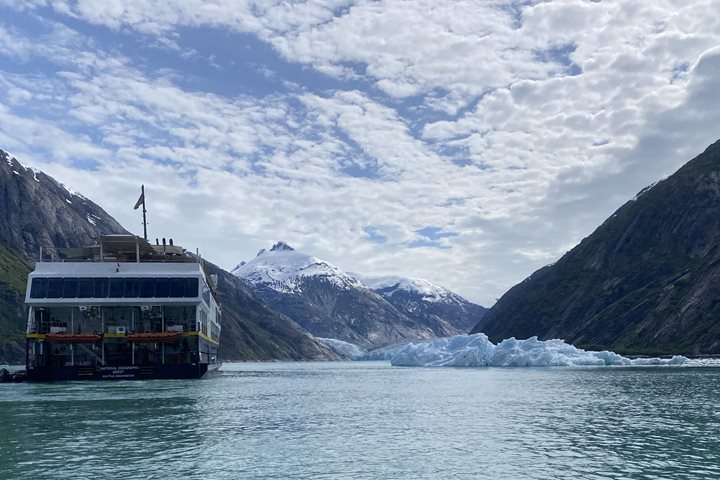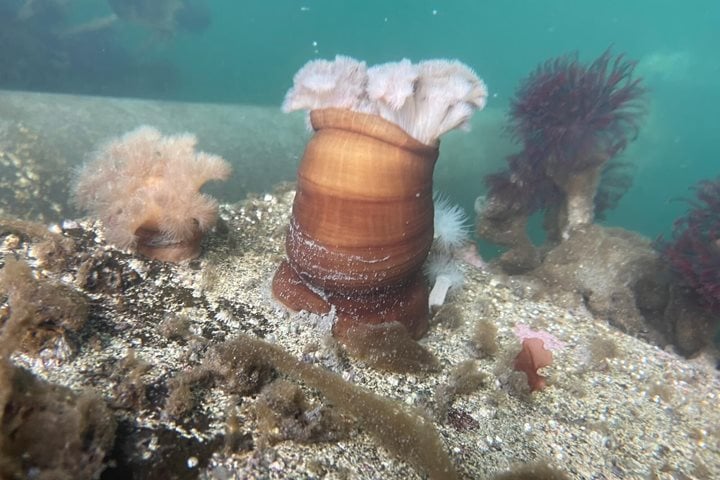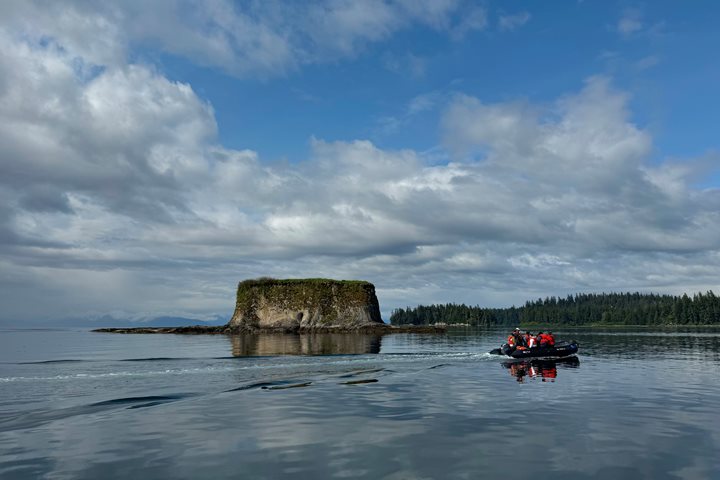A rare, gorgeous morning greeted us at the small fishing town of Petersburg. Every finger of the harbor was crowded with fishing boats awaiting the opening of the fishing season. It was a joy to prowl up and down the harbor and admire the vessels that hail from various homeports.
Well-groomed trails and boardwalks maintained by the U.S. Forest Service made for excellent hiking through an old growth forest comprised of spruce, hemlock, and even yellow cedar, a rare treasure in Southeast Alaska. The trail ended in a muskeg bog, a vital part of the ecosystem in southeast Alaska and home to a carnivorous plant known as a sundew.
As if that wasn’t enough, we had bike tours that explored the Petersburg road system, and many of our guests enjoyed an unforgettable plane ride over the LeConte Glacier!







